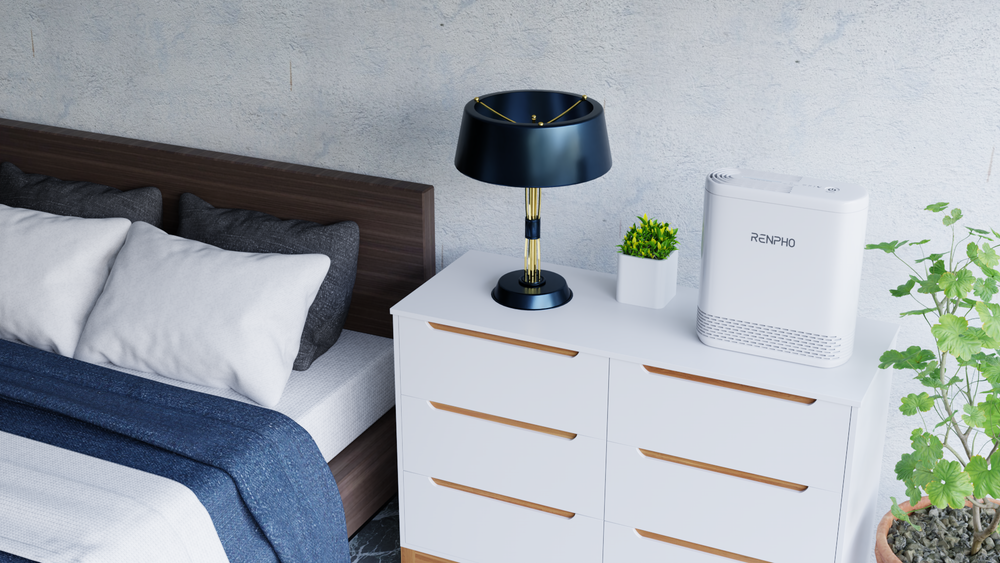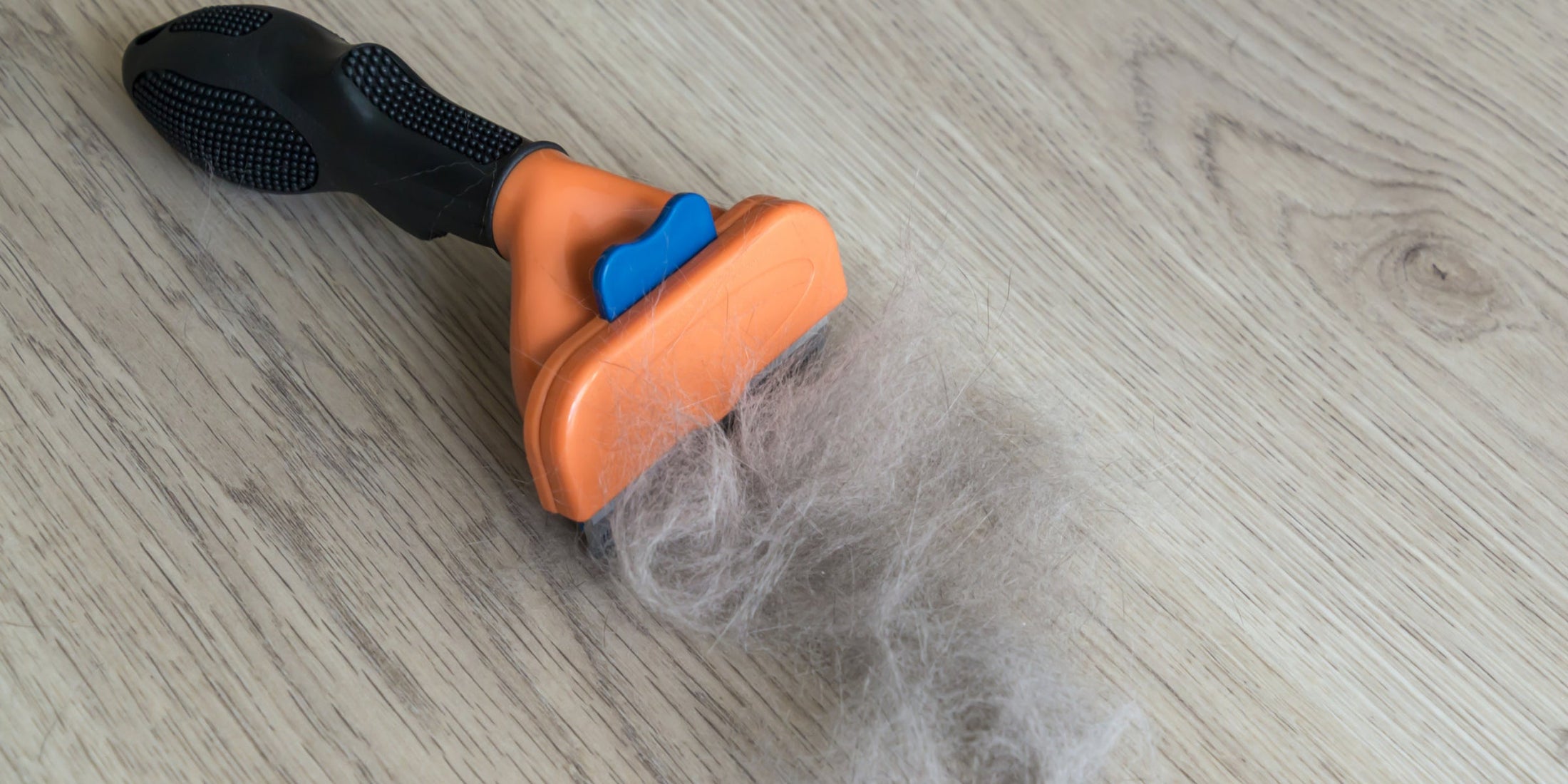Are Air Purifiers Effective Against Mold Spores?

Stay tuned to our latest news
Mold spores are microscopic particles that float in the air and can settle on various surfaces, thriving in areas with moisture and organic matter. Their presence could trigger allergies, respiratory issues, and even contribute to more severe health conditions. Given the potential harm they can cause, it's no wonder that individuals and families seek effective solutions to mitigate the impact of mold spores on their well-being. In relation to this, air purifiers, with their promise of cleaner and fresher air, have gained popularity as amazing devices for maintaining indoor air quality and could also be a potential defense against mold spores. They utilize advanced filtration technologies, such as HEPA and carbon filters, to capture airborne pollutants and improve the overall air quality in enclosed spaces.
But are air purifiers effective against mold? Let’s find out!
What Are HEPA Filters?
HEPA filters, short for High-Efficiency Particulate Air filters, are widely used due to their excellent efficiency in removing harmful air particles. Comprising a dense layer of glass fibers, these filters effectively trap particles, preventing their circulation in the air. These filters are commonly incorporated in air purifiers and HVAC systems to provide clean and healthy indoor air quality. They play a crucial role in removing various pollutants including dust, pollen, pet dander, mold spores, and bacteria from the air. Their ability to capture particles as small as 0.3 microns with an efficiency of 99.97% makes them particularly effective in reducing allergens and improving respiratory health.
Air purifiers equipped with HEPA filters are especially beneficial for individuals suffering from allergies, asthma, or other respiratory conditions. These filters help minimize airborne allergens, creating a safer and more breathable environment. In HVAC systems, they are employed to maintain excellent air quality in commercial buildings, hospitals, laboratories, and other spaces where stringent air cleanliness is required.
How Do HEPA Filters Work?
As previously mentioned, HEPA filters consist of a dense layer of glass fibers. But the thing is, they are arranged in a random pattern, which acts as a maze-like path for air, forcing it through the filter. As the air passes through the filter, the particles it carries collide with the fibers and are trapped. The dense nature of the fiber arrangement ensures that even the tiniest particles are captured.
The effectiveness of HEPA filters lies in their ability to trap particles as small as 0.3 microns. This level of filtration is crucial for individuals suffering from allergies or asthma, as it significantly improves indoor air quality by reducing the presence of airborne allergens.
However, not all filters claiming to be HEPA filters actually meet the stringent standards set by the US Department of Energy. To ensure their effectiveness, it is important to look for true HEPA filters that meet the standards of removing 99.97% of particles of 0.3 microns or larger.
Types Of Mold Spores
Now, not all mold spores present indoors and outdoors are the same. Several types of mold spores could be present at home, including Aspergillus, Penicillium, Cladosporium, and Stachybotrys.
Aspergillus is a common type of mold that can be found both indoors and outdoors. It can cause various health problems, especially for individuals with weakened immune systems. Its spores are small and can easily become airborne, making it easy for them to spread and be inhaled.
Penicillium is another common type of mold that is present both indoors and outdoors. It is often found in decaying organic materials, such as food and plants. Much like Aspergillus, its spores are lightweight and can easily be carried by air, leading to potential health risks when inhaled.
Cladosporium is a type of mold that is commonly found outdoors but can also be found indoors in damp areas such as basements or bathrooms. It is typically black or dark green in color and has a powdery appearance. Its spores are small and can easily be inhaled, potentially causing respiratory issues, allergies, or asthma attacks.
Stachybotrys, also known as black mold or toxic mold, is a type of mold that thrives in wet and humid environments. It shares the same colors as Cladosporium and has a slimy texture. Its spores are particularly concerning as they produce mycotoxins, which can lead to serious health problems when inhaled or touched.
Can HEPA Filters Remove Mold Spores?
Because HEPA filters are designed to capture very small particles with high efficiency, they can effectively trap and remove mold spores in the air. Whether it's spores from Aspergillus, Penicillium, or Cladosporium, the filter's fine mesh structure ensures that even the smallest mold spores are captured and prevented from circulating back into the environment.
It's important to note, while HEPA filters can effectively capture and remove mold spores, they do not eliminate the source of mold growth or address the underlying moisture issue that promotes mold development. To effectively combat mold, it's crucial to identify and address the root cause of moisture, such as leaks or excess humidity, in addition to using air purifiers with HEPA filters.
Do Mold Spores Grow Inside Air Purifiers?Yes, it is possible for spores to grow inside air purifiers. While they are designed to filter and clean the air by trapping particles, including mold spores, these captured mold spores can start to grow and multiply if the filters are not cleaned and maintained regularly. Their presence inside air purifiers can quickly become a problem for several reasons. Firstly, mold can release allergens and irritants into the air, causing respiratory issues and allergy symptoms for individuals in the vicinity of the air purifier. This defeats the purpose of having an air purifier, as it can end up spewing out contaminated air. Furthermore, if mold spores are allowed to grow unchecked inside the air purifier, they can spread to other parts of the house or building through the purifier's vents. This can lead to mold infestations in other areas, potentially causing extensive damage and requiring costly remediation efforts. Therefore, it is crucial to check and clean air purifiers regularly to prevent the growth of mold spores. This involves following the manufacturer's instructions for filter replacement or cleaning. By doing so, you can ensure that your air purifier continues to effectively remove mold spores and maintain healthy indoor air quality. |
Tips for Using Air Purifiers Effectively for Mold Control
To maximize the benefits of air purifiers for mold control, there are several important tips to keep in mind. These tips include selecting the right air purifier given your available space, using a HEPA filter system, positioning the appliance correctly, regularly cleaning and replacing its filters, and maintaining optimal humidity levels. By implementing these tips and using air purifiers effectively, individuals can greatly reduce mold growth in their homes and improve the overall quality of air they breathe.
What Else Can Be Done to Prevent Mold Growth?
Mold growth can be a persistent and troublesome issue in homes, leading to health problems and even property damage. While HEPA filters are a valuable tool in mitigating mold spores, they are not the only solution.
First off, moisture control is crucial in mold prevention. Mold spores thrive in wet or high humidity environments. Address any leaks immediately to prevent buildup. Ensure proper ventilation in areas prone to moisture, such as bathrooms, kitchens, and basements. If possible, you can also utilize dehumidifiers to reduce humidity levels and regularly clean and maintain drip pans in air conditioning units. Don't forget to keep your gutters and downspouts clean for proper drainage away from the building.
Install exhaust fans that vent outside in bathrooms, kitchens, and laundry areas, and use them while showering, cooking, or running the washer and dryer. When the weather permits, open windows to promote fresh air circulation and moisture reduction. Consider using range hoods and exhaust fans in areas where moisture is generated, such as cooking areas.
Moreover, regular cleaning is an essential practice to eliminate mold spores and prevent their accumulation. Utilize mold-resistant cleaning products and techniques to thoroughly clean and disinfect moisture-prone areas, ensuring a mold-free environment.
Proper storage practices can also help prevent mold growth. Utilize moisture-resistant materials and elevate items off the floor to minimize contact with potential dampness.
Regular inspections are key to identifying early signs of water damage, leaks, or excess moisture. Conduct routine checks of your property, paying close attention to areas prone to problems. Should you find any issues, address them promptly to prevent further damage and the potential for mold growth.
Preventing mold growth requires a multi-faceted approach centered around moisture control, ventilation improvement, and regular maintenance. By implementing the strategies outlined in this article, you can significantly reduce the risk of mold growth in your home. A healthy living environment free from mold not only protects your property but also safeguards the well-being of you and your loved ones.
Takeaway
Mold spores pose a significant risk to our health and well-being, making it important to take effective measures to mitigate their impact. Air purifiers with HEPA filters are a valuable tool in capturing and removing mold spores from the air, improving indoor air quality and reducing the risk of respiratory issues.
However, it is not enough to eliminate their presence in the air. At the end of the day, addressing the root cause of mold growth is still the most important aspect of mold control and you can do so by controlling moisture levels and implementing proper ventilation. Regular cleaning and maintenance of air purifiers are also crucial to prevent the growth of mold spores inside the devices. By combining these measures, individuals can effectively combat mold and protect their well-being and property.
Renpho Health Tips
-

How to Make Your Home Feel Warm and Cozy in the Fall
October 12, 2023
Read more >
-

Ditching Pet Dander: Your Guide to Allergy-Free Bliss!
August 10, 2023
Read more >
-

Take Time to Reset: 5 Best Self-Care Practices This Summer
July 2, 2023
Read more >
-

Improving Air Quality: How Does It Affect Sleep?
December 19, 2022
Read more >
-

How and When Should I Clean/Replace My Renpho Air Purifier’s Filter? (Model RP-AP001)
August 3, 2020
Read more >



